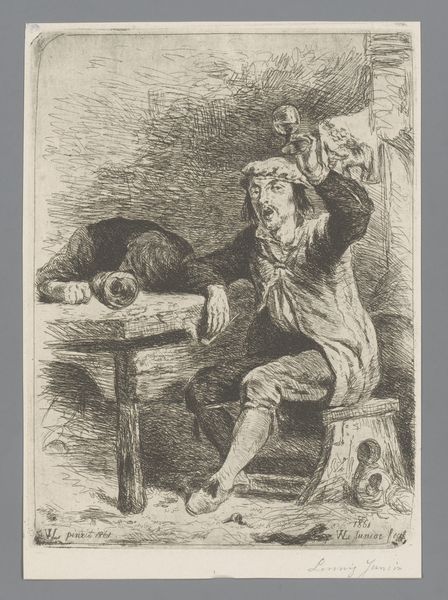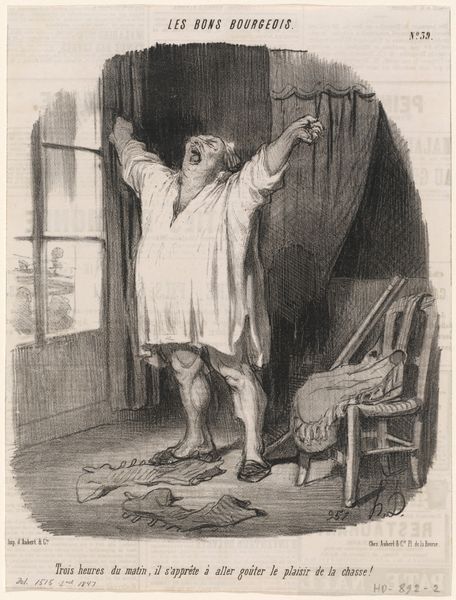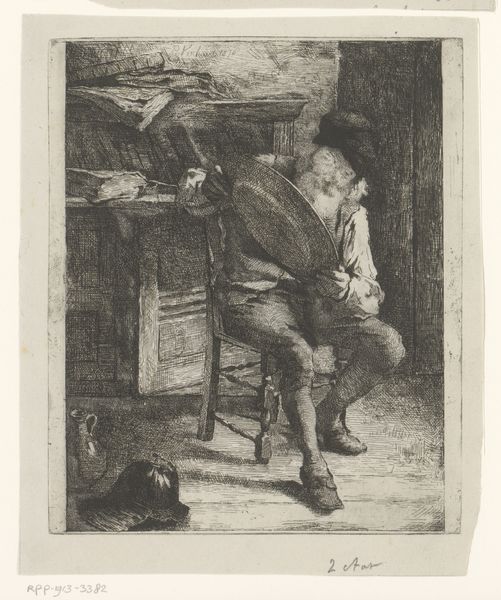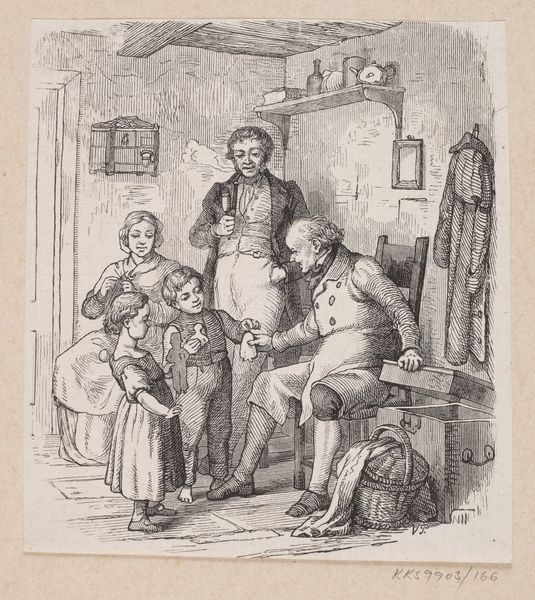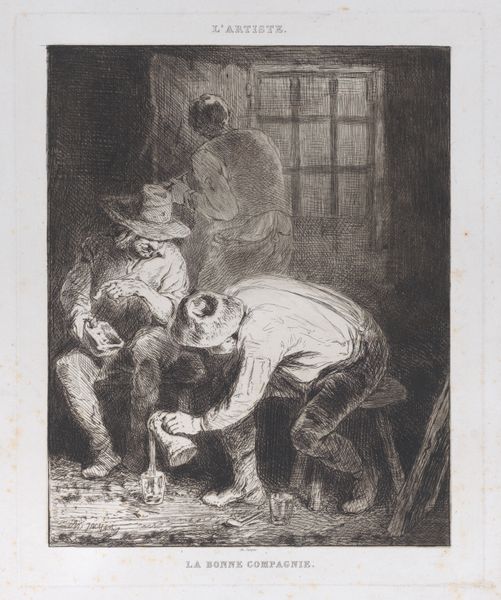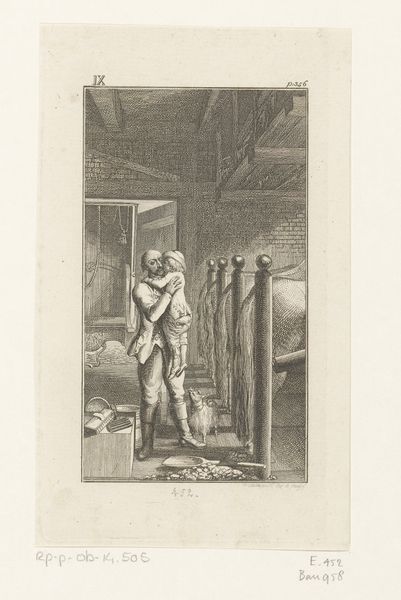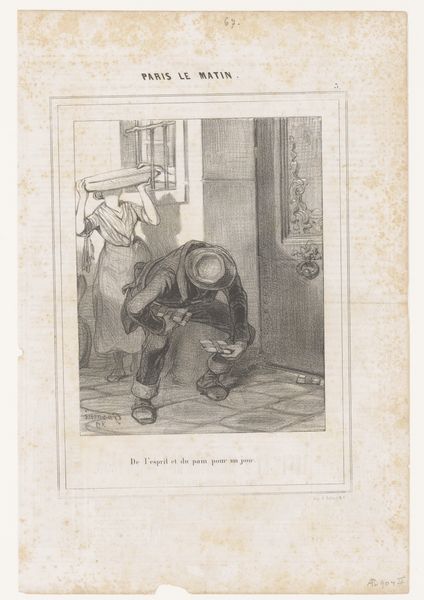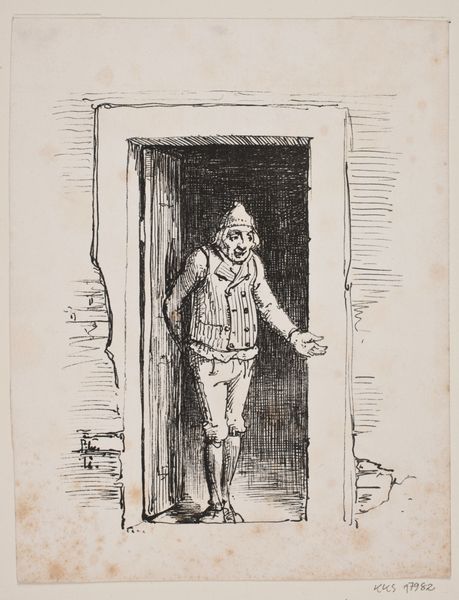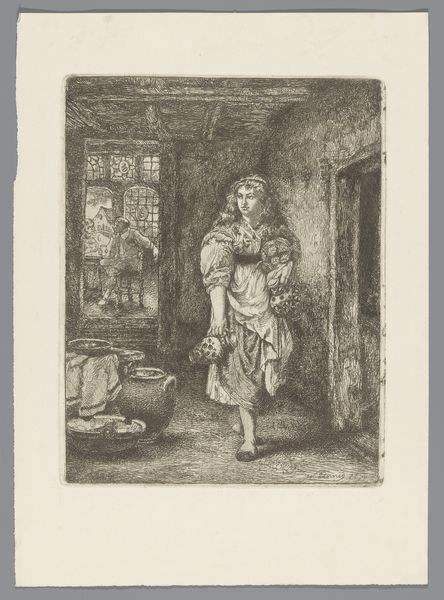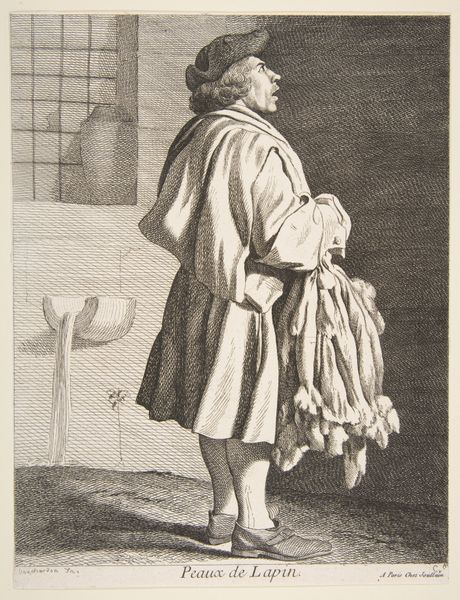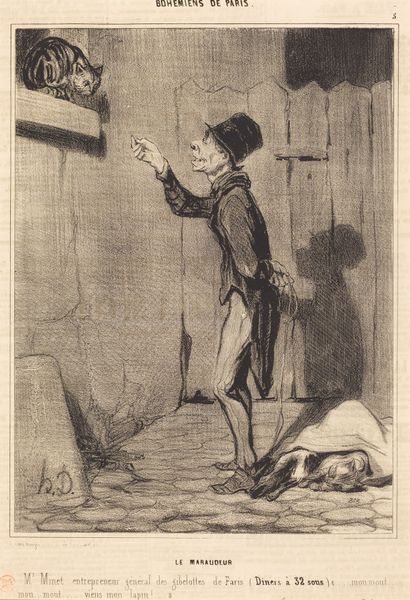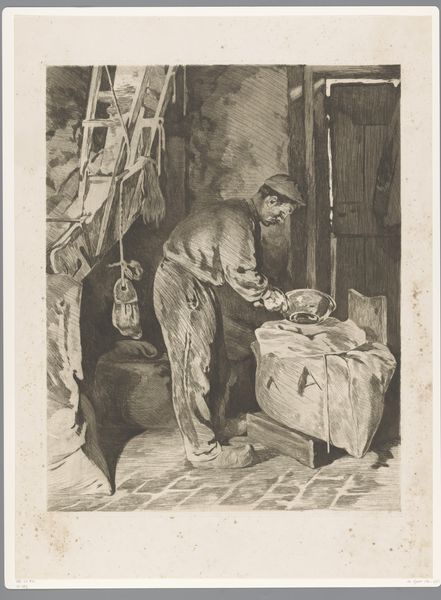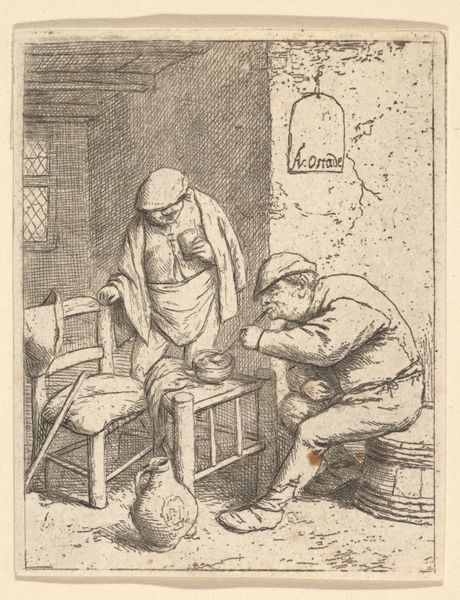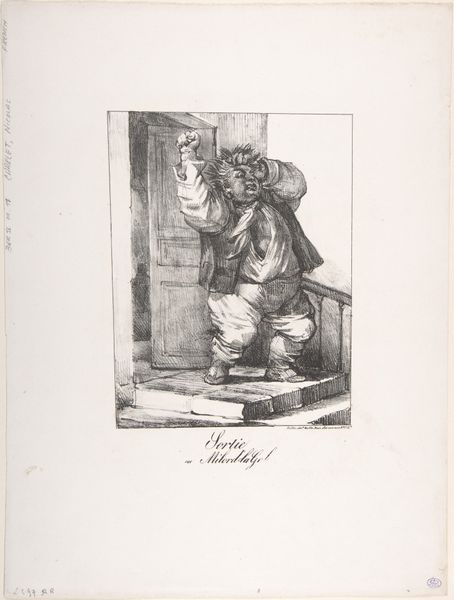
print, etching, engraving
#
narrative-art
# print
#
etching
#
old engraving style
#
genre-painting
#
engraving
Dimensions: 225 mm (height) x 182 mm (width) (bladmaal)
Curator: This is Emil Villumsen's 1885 etching, "Illustration til Holberg: 'Peder Paars'". The work captures a scene from Holberg’s famous satirical poem. What's your initial take on this print? Editor: Well, the dramatic lighting and stark composition create a tense atmosphere. There's one figure sprawled on the floor, head down, while another stands in the doorway, looking quite shocked. It’s visually striking but also feels like it's part of a larger story. What’s your interpretation, especially given the historical context? Curator: Given the source material, we need to consider the social satire inherent in Holberg’s work and how Villumsen interprets it visually. Etchings were a popular medium for distributing satirical imagery to a broader audience. Look closely at the figure in the doorway; what does his posture suggest to you, and how does it reflect societal anxieties of the time? Editor: I see what you mean. The figure in the doorway does appear almost manic, but the contrast in stature seems crucial. I would have to guess that he is reacting with fright over finding the kneeling figure and the upended hat! Curator: Exactly. This contrast in representation – the "shocked" versus the "humiliated", plays into the class consciousness embedded in Holberg's writing, brought into a new visual era via printmaking techniques that, at the time, enabled wide-spread distribution. We're not just looking at an image but a cultural artifact actively participating in societal dialogue. What does considering the audience for prints add to our understanding? Editor: It emphasizes the role of art as a commentator on contemporary issues. Understanding how people received these images at the time can give more context to it, instead of thinking of the art as separated from its period. Curator: Precisely! It shows how art reflects and shapes our understanding of societal norms and historical narratives. It challenges us to think about the interplay between art, politics, and public perception. Editor: I will remember that from now on; every picture is like a political broadcast frozen in time! Thanks!
Comments
No comments
Be the first to comment and join the conversation on the ultimate creative platform.
